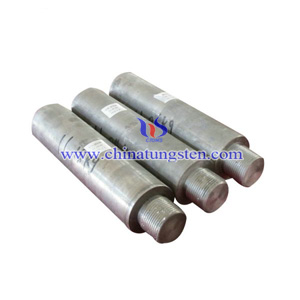Tungsten Electrode Production Technology-Pressing and Sintering Process
- Details
- Category: Tungsten Information
- Published on Monday, 18 April 2016 16:33

After using two-steps hydrogen reduction method reduced the tungsten powder and rare earth oxide powder, to process pressing. During pressing process uses steel mold pressing method. Tungsten powder and rare earth oxide affected by the pressing pressure, it will produce a series of displacement. Fine tungsten powder has smaller particles which can fill in the large grain tungsten powder, so tungsten powder particles to be re-arranged, resulting in doped tungsten powder volume greatly reduced. Besides, tungsten blanks density and strength are greatly enhanced. In addition, the tungsten powder particles under pressing pressure, the contact area between the particles is increase and the gap between the particles is reduce, increasing the cohesion between the powder particles, thereby improving the mechanical bite force between the powder particles, so the density and strength of tungsten blanks will be further improved. In the pressing process, the pressure is about 8.5Mpa.
Tungsten electrode is a refractory insoluble metal, so the sintering temperature is very high and usually uses self-resistive heating, namely, direct sintering method. During sintering, the sintering current is generally selected 90% fusing current, so this method is also called sintered sintering method. Sintering process will affect tungsten electrode’s density, grain size, rare earth oxides distribution and high temperature evaporation loss quantity and so on. And there are many factors affect sintering process, such as time, temperature, heating gradient, heating rate, powder purity. To well control these factors can obtain good performance sintered tungsten blanks, to produce good performance tungsten electrode.
Sintered tungsten blanks performance testing, we can observe the blanks surface color and surface defects, and you can also test blanks absorbent. Besides, you can also use drainage method to measure blank’s density.
| Tungsten Metals Supplier: Chinatungsten Online www.tungsten.com.cn | Tel.: 86 592 5129696; Fax: 86 592 5129797;Email:sales@chinatungsten.com |
| Tungsten News & Prices, 3G Version: http://3g.chinatungsten.com | Molybdenum News & Molybdenum Price: http://news.molybdenum.com.cn |



 sales@chinatungsten.com
sales@chinatungsten.com